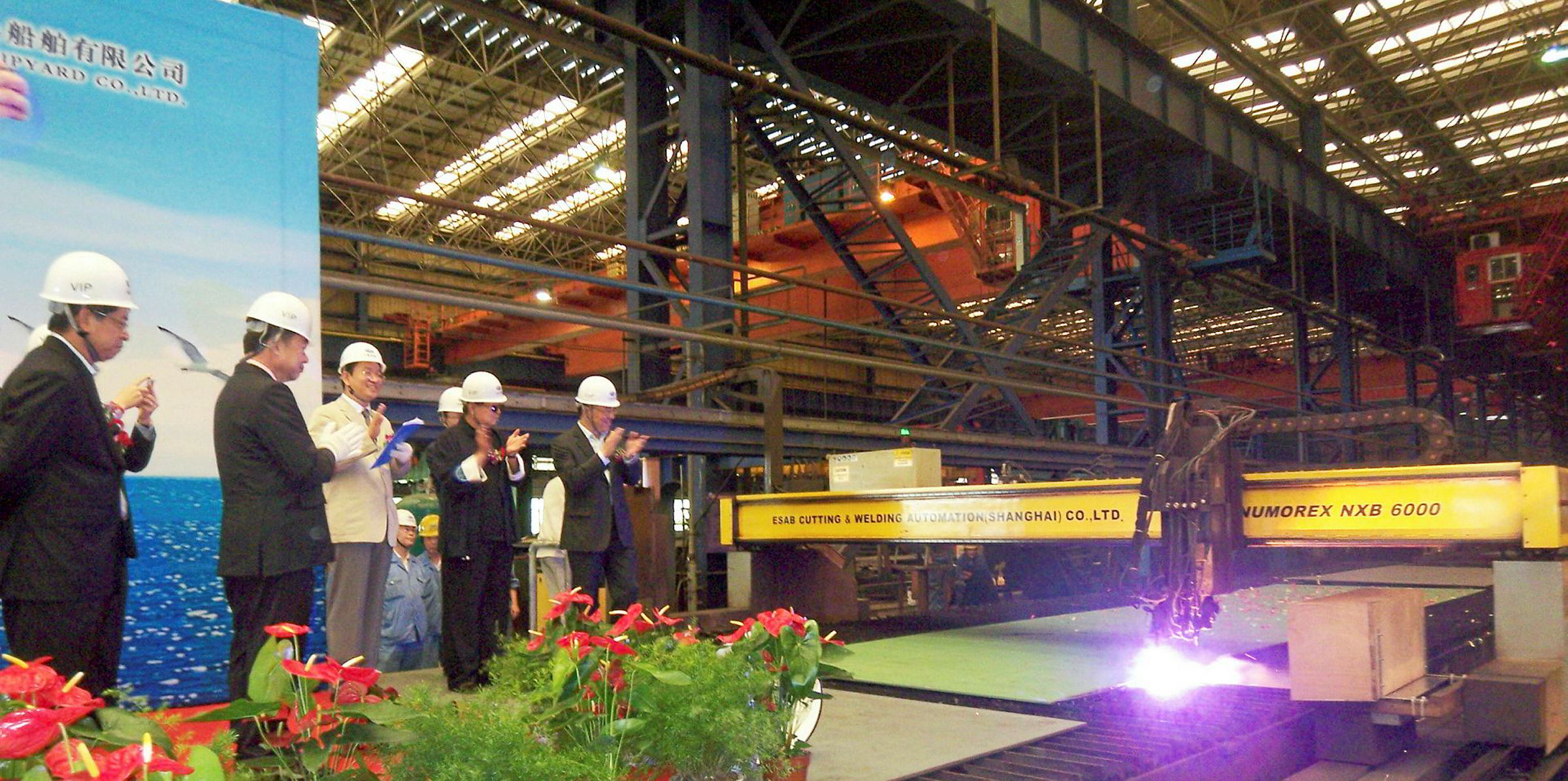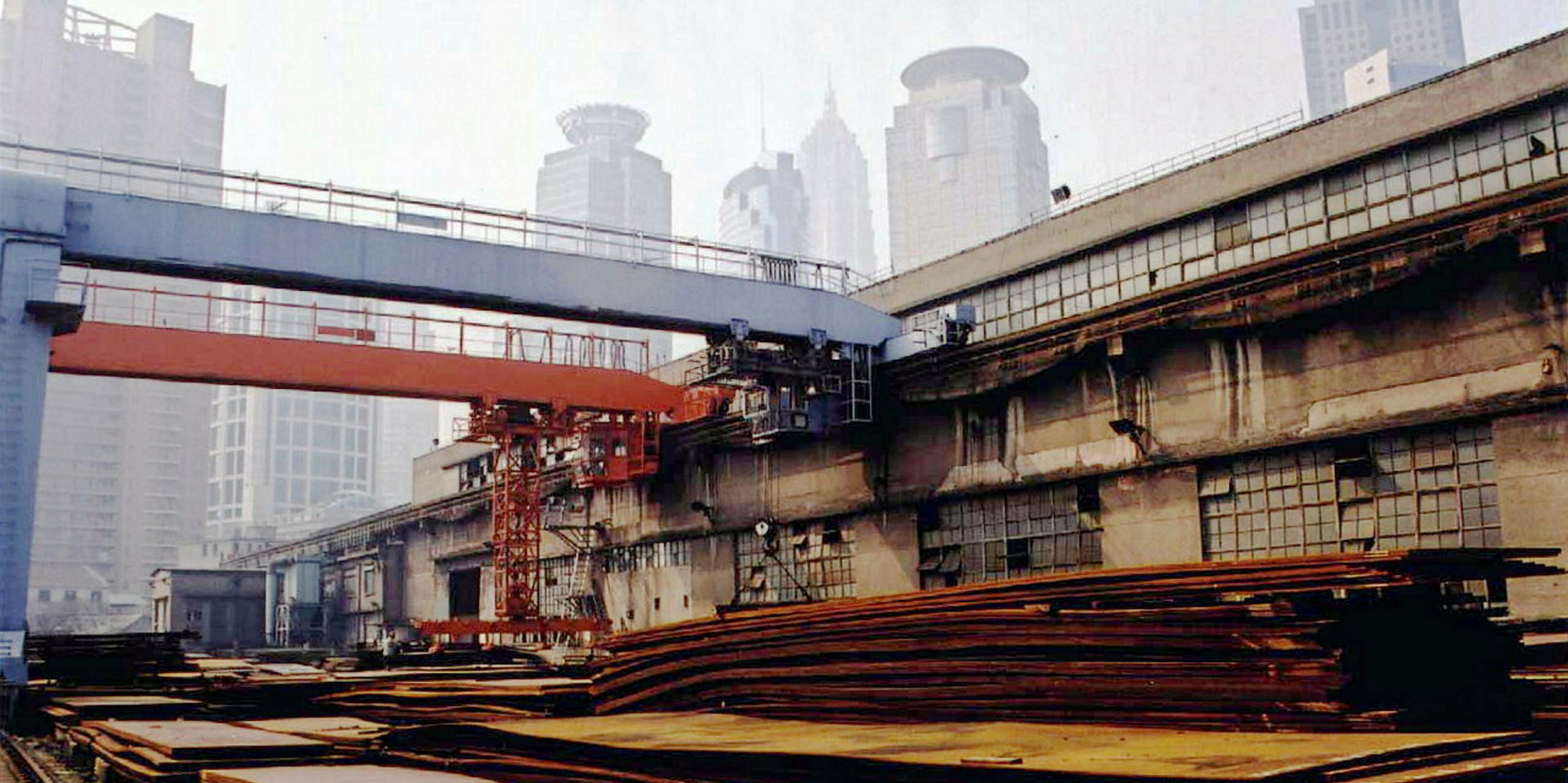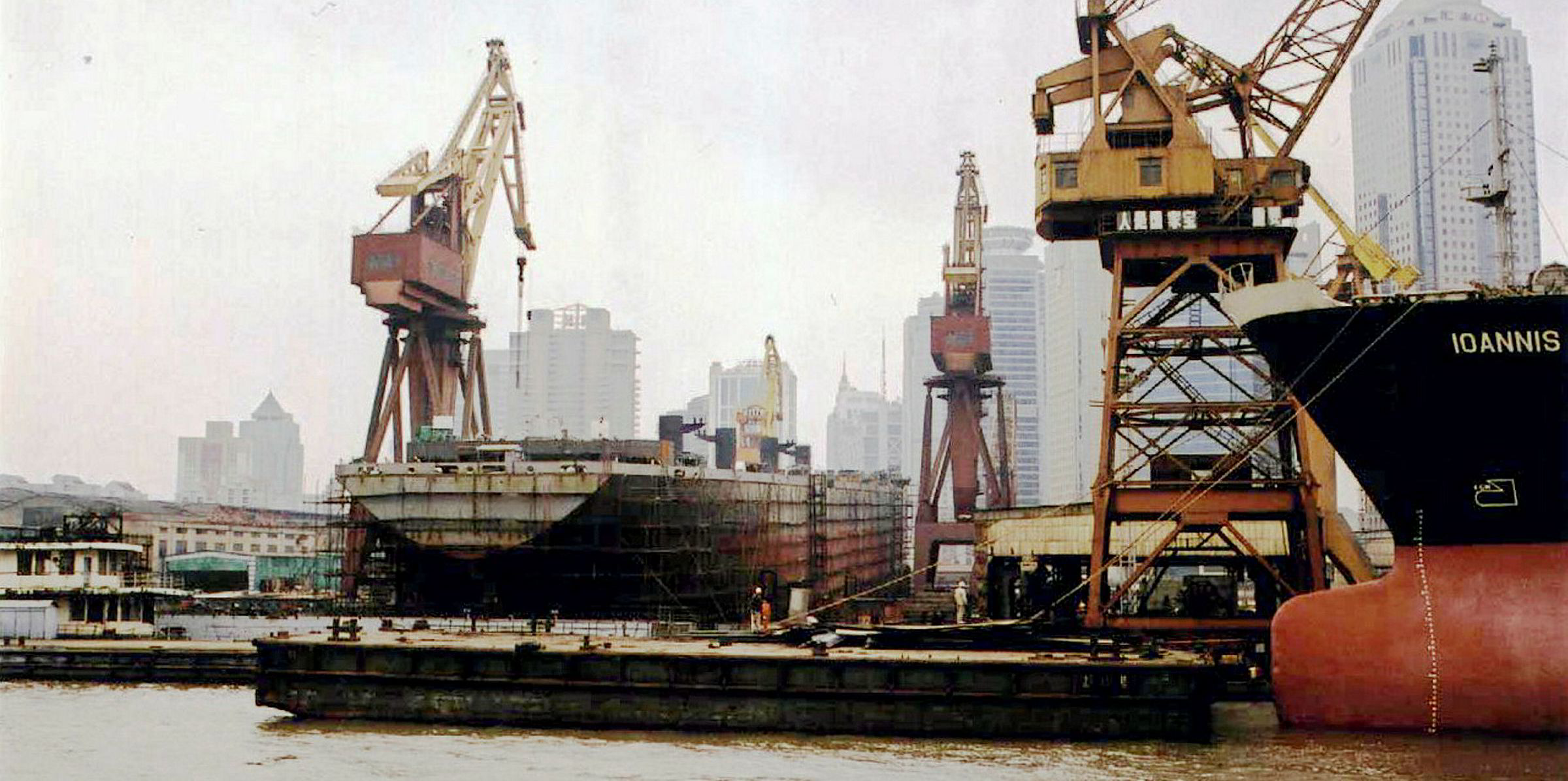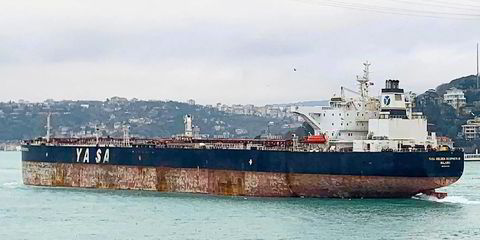China's historic Shanghai Shipyard is nearing the end of a 156-year history as it winds down its shipbuilding operations this year following the closure of its shiprepair business.
The move is related to environmental regulations that limit expansion on Chongming Island in the mouth of the Yangtze River, a shrinking orderbook and the ongoing plans for a fusion of China’s northern and southern state shipbuilding groups.
The global orderbook sunk to a 14-year low at the start of August — just 3,000 vessels of 76 million cgt, its lowest level in cgt terms since April 2004, shipbroker Clarksons said this week.
“This represented a 38% decline in the size of the global orderbook in cgt terms since March 2014," Clarksons added.
In June, TradeWinds reported on talk that Shanghai Shipyard would shut down or alternatively be moved from Chongming to neighbouring Changxing Island, the home of sister yards Jiangnan Shipyard and Hudong-Zhonghua Shipbuilding (Group) in the China State Shipbuilding Corp (CSSC)'s southern group of yards.

Officials then denied the yard would be closing but said it could "change direction", depending on the development of the shipbuilding market, and added that they had received no official notice of a relocation.
But this week, Shanghai Shipyard announced that the launch of a 2,500-dwt boxship in a series for domestic liner operator Zhonggu Shipping would be its last. Repair work has already been discontinued and its shipbuilding business will cease by the end of the year.
The yard's thin orderbook reportedly includes two mini-capesize bulkers for Estonia's Platano Eesti and Zhonggu's four-unit series. Two remaining drillships in a three-vessel order for Opus Offshore were cancelled earlier this year.
Shanghai Shipyard is one of several claimants to the title of China's oldest shipyard.
Fujian Mawei Shipbuilding in south-eastern China, established in 1866 to build up the country's naval defence force, bills itself as the oldest yard to be established by the Chinese government.
But that does not make it the oldest shipyard or even the oldest state-owned one. That title is held by formerly private yards nationalised after the Communist takeover of mainland China in 1949, most recently operating under the CSSC banner.

Jiangnan Shipyard Corp claimed the title as "China's first manufacturing base for steel, naval ships and steel cannons" in 2008 when it celebrated its 143rd birthday and moved to Changxing Island from its historic location south of downtown Shanghai in order to make room for World Expo 2010. One of its docks is still in use in the form of the CSSC Pavilion at the Expo grounds.
Shanghai Shipyard supposedly got its start in 1862, three years earlier than Jiangnan Shipyard.
It too has left a physical trace in modern Shanghai, which it left in 2003. This year, the last remaining building on its original site, repurposed and reconstructed by Japanese architect Kengo Kuma, reopened as a theatre called Shipyard 1862. The building is said to have housed the last working factory in what is now the skyscraper forest of Shanghai's financial district of Lujiazui.
From 2013 to 2016, Shanghai Shipyard was managed by Hudong-Zhonghua. It remains a subsidiary of Hudong-Zhonghua within the complicated CSSC organisational chart.




